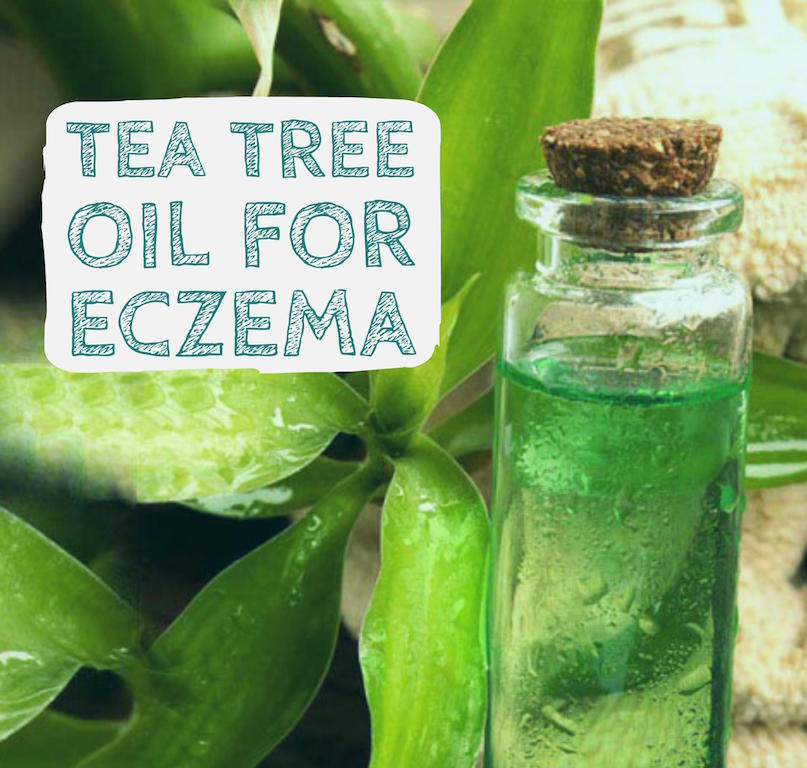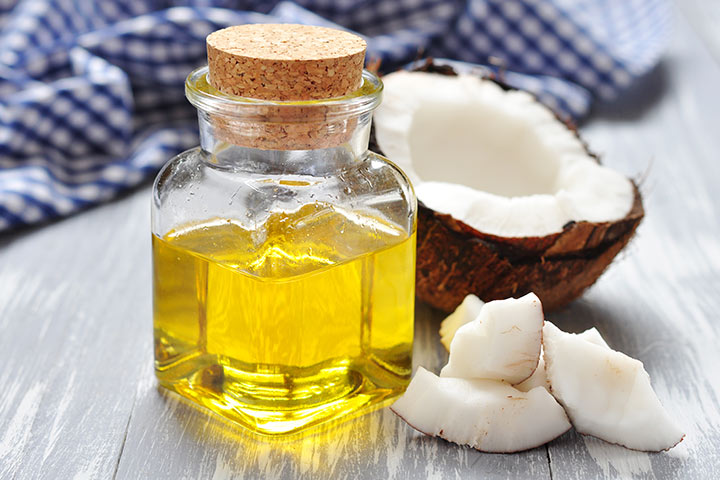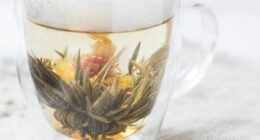 Dry, itchy and inflamed skin can be really tough to deal with, especially if it occurs on the face. Though it doesn’t pose any serious problem, the skin appears lifeless with flaky patches and painful cracks in severe cases.
Dry, itchy and inflamed skin can be really tough to deal with, especially if it occurs on the face. Though it doesn’t pose any serious problem, the skin appears lifeless with flaky patches and painful cracks in severe cases.
Dry skin develops when our skin becomes incapable of retaining the moisture content within it. This occurs when sebum (barrier against moisture escape) is not/less produced by our sebaceous glands. This can be caused due to factors like dehydration, excessive sun exposure, harsh chemicals in cosmetics or cold and dry weather.
While certain medicated ointments give short term relief in cases of chronic dryness, it is always better to adopt a regular moisturizing therapy using natural ingredients that work as emollients to keep the skin hydrated from within.
Milk, olive oil, honey and avocadoes are some examples of natural home remedies and hydrating agents for the skin. Let’s have a detailed look at the various ways milk can benefit dry skin as an exfoliator and moisturizing agent.
What Makes Milk Effective for Dry Skin?
- Milk is a rich source of lactic acid, an alpha-hydroxy acid that helps to exfoliate dry and dead skin cells, stimulating cell regeneration for softer, smoother skin.
- Since the deficiency of potassium can contribute to skin dryness, the potassium content in milk works to keep the layers of the skin moisturized and hydrated internally. (1)
- The calcium constituent of it heals dry and withered skin of the epidermis. This reduces symptoms of skin dryness like itching and irritation.
- Vitamin D present in milk stimulates collagen production in dry skin and improves skin elasticity by keeping it hydrated from within.
- It is also a good source of beneficial proteins which helps to repair connective tissues of dry skin.
- The magnesium in milk slows down the ageing process of dry skin, preventing wrinkles and blemishes.
How to Use Milk for Dry Skin
Milk can be used in multiple ways to treat dry and withered skin. For your convenience, we have provided a detailed description of various methods below.
1. Milk
The lactic acid in milk works as a humectant to retain moisture in the skin. Milk also has anti-inflammatory properties that have a soothing effect on dry skin and provide relief from itching.
- Take 3-4 tablespoons of cold milk in a bowl.
- Dip a cotton ball or a piece of gauze in it.
- Apply it to dry skin.
- Allow the milk to soak into the skin for 10 minutes.
- Rinse off with cool water.
- Re-apply every alternate day.
2. Milk Cream
The fats, proteins, minerals and lactic acid helps to soothe the itching, moisturize the skin, exfoliate dead skin cells and lighten the blemishes.
- Take 2-3 tablespoons of fresh milk cream in a bowl.
- Use your fingers to apply it evenly on dry skin.
- Massage it in gentle, circular motions for 5 minutes.
- Leave it on for about 15 minutes.
- Rinse off with cool water.
- Repeat the process 2-3 times in a week.
3. Milk and Yogurt
Yogurt is a good source of essential fats, vitamins, minerals and proteins that help seal moisture into the skin and keep it hydrated.
- Mix 1 tablespoon each of milk and yogurt together in a bowl.
- Spread evenly on dry skin using a cotton ball.
- Leave on for 15-20 minutes.
- Wash off with cool water.
- Repeat every alternate day for a fortnight.
Note: This also acts as an effective natural sunscreen, protecting dry skin against sun damage.
4. Milk and Honey
Honey is a natural humectant that helps to draw moisture into the skin from the environment and retain it. The antioxidant properties of honey fight off the free radicals that damage the skin and cause dryness. It is better to use organic raw honey for better results.
- Combine 2 tablespoons of milk and 1 tablespoon of honey in a bowl.
- Apply on dry skin using a cotton ball.
- Allow it to stay on for 15-20 minutes.
- Wash off with cool water.
- Repeat twice a week.
For extra benefits: You can add 2 tablespoons of oatmeal into the mixture. The proteins and lipids in oatmeal render humectant and emollient properties to oatmeal which forms a protective layer on the skin and prevent moisture loss to the environment.
5. Milk and Brown Sugar
Brown sugar contains humectant properties which draws moisture from environment and deposits it into the skin. The glycolic acid present in it supports cell turnover and keeps the skin healthy.
- Take 2 tablespoons of brown sugar in a bowl.
- Add milk dropwise till the mixture becomes slightly soupy.
- Apply lightly over dry skin and massage in for 3-4 minutes.
- Leave on to air dry for 10 minutes.
- Wash off with cool water.
- Re-apply 2-3 times a week.
Note: For extra hydrating benefits, stir in 1 tablespoon of honey into the mixture.
6. Milk and Banana
Bananas are loaded with mineral potassium that helps to moisturize dry skin. Vitamin E and B-complex vitamin present in banana prevents dryness caused by free radicals and slows down the aging process of the skin.
- Mash a ripe banana using a fork.
- Add 2 tablespoons of milk to it and stir thoroughly to make a thick paste.
- Massage in the mixture on dry skin and leave on for 20-25 minutes.
- Rinse off with cool water and pat dry.
- Re-apply 2-3 times a week for effective results.
Note: For extra benefits, you can add 1 1/2 tablespoon of honey. Honey contains humectant properties which draws moisture into the skin and helps to retain it.
7. Milk and Avocado
Avocado is a rich source of vitamins B and E, healthy fats and natural oils that soothe, moisturize and hydrate dry skin. It is also a natural anti-inflammatory that helps reduce the inflammation and irritation associated with dry skin.
- Mash ¼ of a ripe avocado into a lump-free paste.
- Add 1 tablespoon of milk to it.
- Stir well and apply mixture evenly on dry skin.
- Allow it to stay on for 10-15 minutes.
- Wash off with lukewarm water.
- Repeat the method 2-3 times a week.
8. Milk and Green Gram
Green gram is rich in skin cell rejuvenating vitamins and enzymes that soothe dry skin and help to retain moisture in it. It is also rich in Vitamins A and C that help keep dry skin nourished and healthy, as a result of exfoliation and hydration.
- Soak 2 teaspoons of green gram overnight in some milk.
- In the morning, grind it to a coarse paste.
- Apply on affected areas of the skin.
- Massage in with circular motions for 5 minutes.
- Leave on for 20 minutes.
- Repeat thrice a week.
9. Milk and Tomato Juice
Tomato juice is rich in anti-oxidants and vitamin C, which are beneficial for soothing and toning dry skin. Its astringent properties prevent premature skin ageing and wrinkling.
- Mix ½ cup each of milk and tomato juice together.
- Use a cotton ball to massage it onto the skin.
- Leave on for 15-20 minutes.
- Rinse off with cool water.
- Repeat 2-3 times a week.
10. Milk, Egg Yolk and Honey
Egg yolk is rich in Vitamins A, B2 and B3 that make it a naturally hydrating anti-inflammatory agent for dry and itchy skin. It also contains protein and zinc that promotes skin elasticity and slows down premature ageing for dry skin.
- In a bowl, add 1 egg yolk, 1 tablespoon each of honey and milk.
- Whisk them together into a thick paste.
- Gently apply a thick layer on dry skin.
- Allow it to dry for 10-15 minutes.
- Wash off with cool water.
- Repeat twice a week.
11. Milk, Lemon Juice and Rosewater
Lemon juice gently removes dry and dead skin cells from the surface to reveal soft, glowing skin. Rosewater has natural anti-oxidant and moisturizing properties that maintain the pH balance of dry skin and keep it nourished.
- In a bowl, add 4-5 tablespoons of milk.
- Add 2-3 drops each of lemon juice and rosewater to it.
- Mix well and apply it to affected areas of the skin.
- Leave on to dry for 15 minutes.
- Wash off with cool water.
- Use once every two days.
Alternative Method: You can add a pinch of turmeric or 2 tablespoons of cucumber juice instead of rosewater.
Note: Using lemon juice on the skin can lead to photosensitivity; hence avoid sun exposure for at least 5 – 6 hours after the treatment and apply sunscreen whenever you go out in the sun.
12. Milk, Fuller’s Earth and Rosewater
Fuller’s earth is rich in anti-oxidants and vitamins that have a calming and soothing effect on dry skin. It also improves the blood circulation and provides relief from symptoms like itching and inflammation.
- Mix 2/3 tablespoon of fuller’s earth and enough amounts of milk to make a paste.
- Add 2-3 drops of rosewater to it and stir well.
- Apply to affected areas of the skin.
- Leave on for 10 minutes.
- Wash off with cool water.
Note: You can also add honey to this remedy to make it a deep hydrating mask for dry skin.
13. Milk and Almonds
Almonds are a rich source of vitamins, minerals and essential fatty acids that deeply moisturize dry skin. They also reduce the itching and inflammation associated with dehydrated skin.
- Fill half a small bowl with milk and soak 5 almonds in it.
- Leave it aside for an hour.
- Grind the soaked almonds into a paste.
- Massage it on dry skin for 3-5 minutes.
- Allow it to dry for 15-20 minutes.
- Wash off with cool water.
- Repeat the application once in a week.
For Added Benefits: Add soaked dates while grinding the mixture of almonds and milk. Dates are loaded with Vitamins B and C that help retain the moisture levels in the skin and maintain the skin elasticity.
14. Milk, Olive Oil and Turmeric
Olive oil is a natural humectant which helps attract moisture to dry skin. It is also rich in anti-oxidants, squalene and vitamins that help nourish dry, flaky skin.
- Mix 1 tablespoon milk, 3-4 drops of olive oil and a pinch of turmeric powder in a bowl.
- Apply the mixture all over dry skin.
- Allow it to stay on for 10-15 minutes.
- Rinse off with lukewarm water.
- Re-apply twice a week.
15. Milk, Gram Flour, Honey and Rosewater
Gram flour is an effective scrub that removes dead cells and unclogs pores on dry skin. When used in combination with milk, honey and rosewater, it works to nourish and hydrate dry skin.
- Into a bowl, add 4 tablespoons of milk, 2/3 teaspoon of gram flour, 3-4 drops of honey and 2-3 drops of rosewater to it.
- Stir thoroughly to make a paste.
- Use a cotton ball to apply on dry skin.
- Leave on for 10 minutes.
- Rinse off application with lukewarm water.
- Follow the method 2 times in a week.
Note: This mixture can be stored in the refrigerator for up to a week.
16. Milk, Brewer’s Yeast and Honey
Brewer’s yeast is a rich source of Vitamin B, chromium, selenium and proteins that help to nourish dry skin and maintain its elasticity.
- In a bowl, add 2-3 tablespoons of powdered brewer’s yeast, 1 tablespoon honey and ½ cup of warm milk.
- Mix them together to form a smooth paste.
- Apply on affected areas of dry skin.
- Leave on for 15 minutes.
- Wash off with cool water.
- Re-apply 2-3 times a week for best results.
17. Milk, Aloe Vera Gel, Honey and Essential Oil
Aloe vera is a rich storehouse of water, polysaccharides, lectins and mannins that make it an excellent moisturizer for dry skin. Its anti-inflammatory and anti-oxidant properties help in rejuvenating dry skin.
- In a bowl, add 1 teaspoon each of powdered milk and aloe vera gel, 1 tablespoon honey and 2 drops of an organic essential oil.
- Mix well to form a thick paste.
- Spread evenly on dry skin.
- Allow it to stay on for 15 minutes.
- Rinse off with lukewarm water.
- Repeat the method twice a week.
18. Milk, Coffee, Cocoa Powder and Honey
Being a natural exfoliator, coffee helps to scrub away dry and dead cells from the skin surface. It also softens the skin and helps to restore moisture within it. Cocoa powder contains vitamin A, folic acid and potassium, which helps to keep the skin hydrated from within.
- In a bowl, add 3 tablespoons of milk, 1 tablespoon honey, 2 tablespoons each of ground coffee and cocoa powder.
- Mix well to form a thick paste.
- Spread the mixture evenly on dry skin.
- Leave on for 25-30 minutes.
- Wash off application with cool water.
- Repeat the application once a week.
19. Milk, Almonds, Aloe Vera Gel, Honey and Essential Oil
This combination helps to retain the moisture content within the layers of the skin and provides deep, long-lasting hydration for glowing skin.
- Take 1 teaspoon each of milk, almond paste and aloe vera gel in a bowl.
- Add 1 tablespoon honey and 2 drops of an essential oil of your choice.
- Mix all the ingredients well.
- Spread the mixture evenly on the dry skin.
- Leave on for about 15 minutes.
- Rinse off with lukewarm water.
- Repeat 1-2 times a week.
Note: Soak almonds in water overnight and grind them to get a thick almond paste for this remedy.
Tips and Precautions
- Carry out a simple patch test on your inner arm to make sure you aren’t allergic to it.
- Fresh, raw, unpasteurized and organic milk is most preferable for effective results.
- Full fat cow’s milk is ideal for nourishing and softening dry skin. It is thick and creamy, which moisturizes dry skin as a result of the vitamins and proteins present in its fat content.
- Other dairy products like fresh cream or buttermilk can also be used as a substitute for milk. Goat’s milk has a pH value similar to that of our skin’s natural level; hence it works well as a topical application too. Powdered milk is another good alternative which can be used in case liquid milk is not available.
- If your skin feels excessively dry after an application, then apply a light, water-based, oil-free moisturizer.
- Significant reduction in dryness will only be visible after regular usage of any natural remedy over a prolonged duration of time. Overnight reduction in dryness is not possible with any of the above remedies.
- Avoid alcohol-based skin products. These tend to dry out the skin further.
- Opt for short, warm water baths instead of long, hot water baths as they wash away the essential oils from the skin making it further prone to dryness.
- Plug in a humidifier in your room to infuse the surrounding air with moisture to prevent dry skin.
- Include plenty of fruits, fresh fruit juices and green leafy vegetables in your diet.
- Keep yourself adequately hydrated by drinking water throughout the day for healthy, nourished skin.
- In case dryness persists or increases even after using any of the above mentioned natural remedies for more than a month, it is recommended to consult a dermatologist.
Say good bye to dry skin and its problems with any of these natural milk remedies! Which one of the above did you find most suitable to treat your dry and rough skin? Do share your thoughts and suggestions with us in the comments section below.









